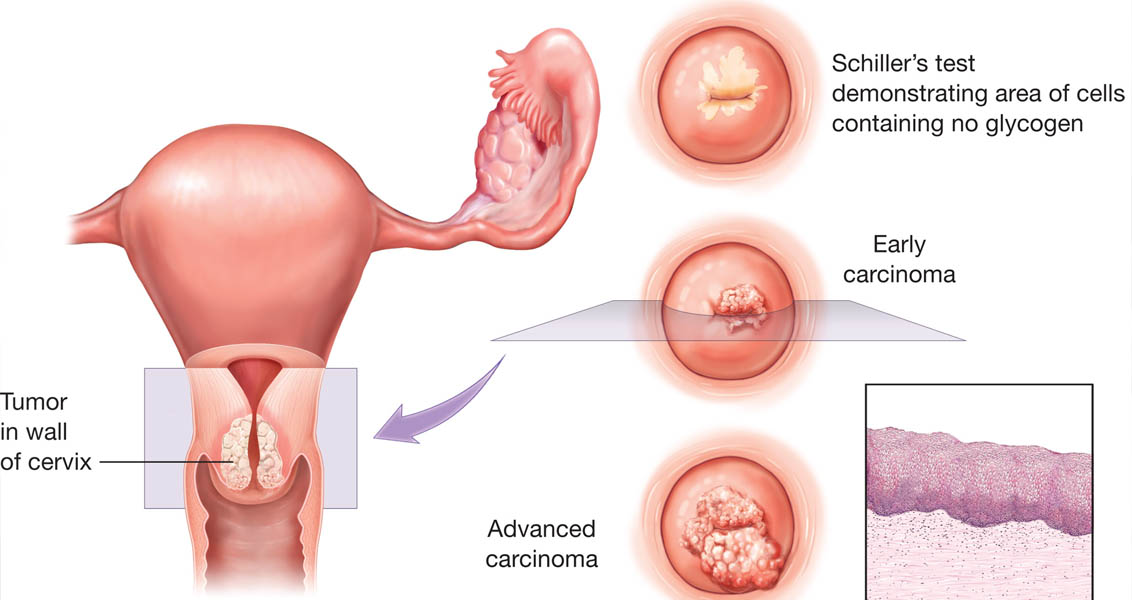Cervical cancer
Cervical cancer is caused by the growth of abnormal cells in the cervix.
The cervix (Cervix uteri) is the lower part of the uterus (Uterus) that connects the uterus to the vagina.
99% of cervical cancer cases are caused by infection with sexually transmitted strains of the human papillomavirus (HPV).
As stated by the World Health Organization, cervical cancer is the fourth most common cancer among women, so awareness is raised about cervical cancer in January of each year.
Cervical cancer symptoms:
Generally, early-stage cervical cancer causes no signs or symptoms.
More advanced cervical cancer signs and symptoms include:
Vaginal bleeding after intercourse, between menstrual cycles, or after menopause.
Vaginal discharge that changes color and odor.
Pelvic pain or pain during intercourse.
Cervical cancer risk factors:
recurring marriage.
Early sexual activity.
Other types of sexually transmitted infections.
Weakened immune system.
smoking.
Use of medications to prevent miscarriage.
Use of contraceptives for more than 5 years.
Cervical cancer treatment:
When cervical cancer is detected in its early stages, the chances of a cure are great, and if it is detected at a very early stage, there is a chance that the patient will be able to become pregnant and have children after completing the treatment.
Therapeutic methods used include:
Hysterectomy, removal of lymph nodes in the pelvic area, and it may be necessary to remove both ovaries and fallopian tubes.
Radiation therapy
Chemotherapy
The amount of treatments needed is determined by the amount of cancer cells that have grown, and there is also the possibility of combining a number of treatments.
Prevention of cervical cancer:
Receiving human papillomavirus (HPV) vaccinations.
Regular Pap smear, once every three years.
Refrain from smoking.

